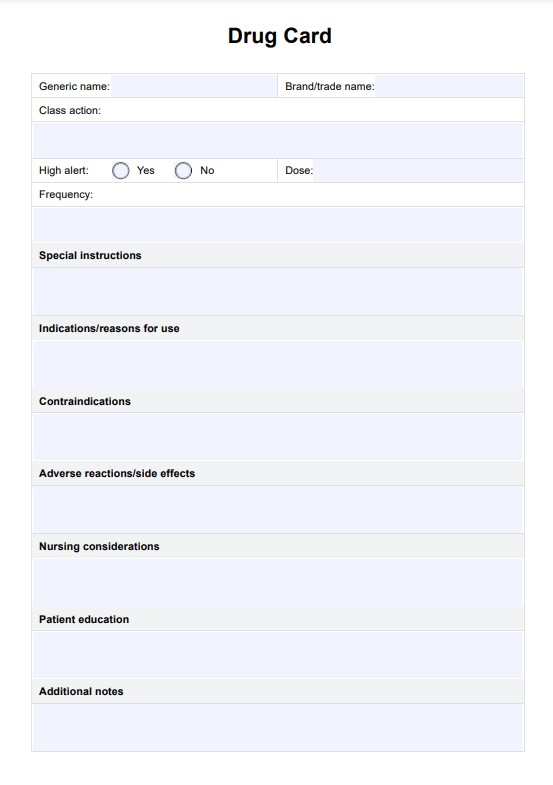The Drug Card Templates are used to organize and store important information about prescription medications. Pharmacists, doctors, or patients can fill out these templates to ensure that all necessary details are readily available.

Drug Card Template
Enhance your understanding and practice of drug administration. Get access to a free Drug Card Template here.
Drug Card Template Template
Commonly asked questions
The drug card typically includes the brand name, generic name, dosage form, strength, route of administration, indications/uses, contraindications, adverse reactions/side effects, precautions/warnings, interactions with other drugs or food, and storage information. It may also include the manufacturer's information and expiration date.
Some common examples of drugs include Acetaminophen (Tylenol) for pain relief; Ibuprofen, a nonsteroidal anti-inflammatory drug (NSAID) for reducing fever and pain; and Amoxicillin, an antibiotic for various infections. Other examples are Atorvastatin for lowering cholesterol, Metformin for managing type 2 diabetes, and Lisinopril for high blood pressure. Additionally, Albuterol is a bronchodilator for asthma, Sertraline is an antidepressant for anxiety and depression, Simvastatin helps with cholesterol management, and Omeprazole treats gastroesophageal reflux disease (GERD). Each of these drugs has specific therapeutic uses, showcasing the diverse range of medications available for various health conditions.
EHR and practice management software
Get started for free
*No credit card required
Free
$0/usd
Unlimited clients
Telehealth
1GB of storage
Client portal text
Automated billing and online payments











